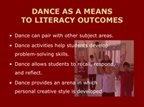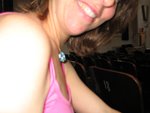In Retrospect: Final Project Evaluation

Posting these pages on the Internet in a timely fashion proved to be a great decision because we were able to look at our group-mates' pages as they were developing. This virtual check in on the progress of each page was helpful in many ways. It inspired me to make my page better, reminded me of things I should include on my page, and reassured me that each person was doing their part. Technology was definitely to thank for this aspect of the project. In another group situation where technology was not involved, you would have had to wait until the next meeting of the group to see the progress. Another way in which we employed technology was that we could email each other at any time to give a comment or spelling correction to aid in making each page the best it could be. Because of the short time in which to create a web presence and complete the project, we had no choice but to come together quickly with ideas and content for our site. Every in-person meeting became a brainstorming session which went very smoothly. We met before class on several occasions to work intensely on our own part of the project, saving time to come together at the end of each session to discuss ideas about the presentation of the project. This made it possible to solve problems and assist each other in a variety of ways. We were successful in maintaining a dynamic interaction both in cyberspace and in person.
Each member had substantial input to the final product, and even came up with an additional contribution in the last 24 hours of the project: virtual teacher introduction video, embedded YouTube video, presentation content, and group interview video and photos. The technology class itself served as a lab for creating our website, as we were able to test our webpages on both PCs and Macs. Among the group members we had a variety of web browsers, so we were able to test our pages to get everything on our site to look as we intended in as many situations as possible. When presentation day arrived, we were ready to go. We started with our virtual teacher, via a QuickTime Movie, giving us our assignment, then we presented each member's contribution to the website. I am thrilled with the results of our preparation and our subsequent presentation of the material. As a celebration of the project culmination and a continuation of the process, our group went out to a Korean restaurant where we shared food and arts discussions. Thank you Andrea, Bomi, and Kanika for a delicious end to an intense project.




